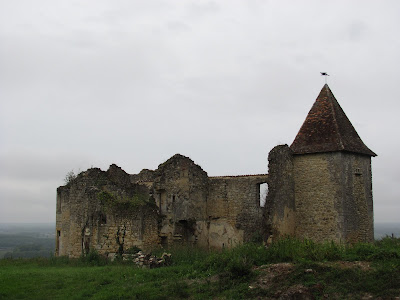Seeing that I visited the Food Capital of France, it was necessary to visit the Wine Capital of France.
A passion for excellence in life and style and the appreciation for the craftsmanship and heritage of winemaking is what I experienced during my visit in the vineyards of Bordeaux.
Bordeaux, in south-western France, is arguably the most famous wine region in the world. It is rivaled only by the likes of Burgundy, Champagne, Rioja, Chianti and the Napa Valley. The region takes its name (which translates roughly as 'next to the waters') from the port city of Bordeaux, which serves as its logistical and administrative center.
The Bordeaux viticultural region stretches 130km inland from the Atlantic coast. It is home to more than 10,000 producers, who turn out a vast quantity of wine in every vintage. These range from inexpensive table wines through to some of the world’s most expensive and prestigious labels. The majority of Bordeaux vineyards are planted with red wine grapes, although some white varieties are used in the production of dry white and sparkling wines. The remainder go into the region's highly esteemed sweet wines.
I booked a wine tour as soon as I got to Bordeaux. Most of the tours were already fully booked but I managed to join a walking group that were going to visit 2 Chateaus. Our group was a mixture of French, Asian, Australian, American and Russian folk. Our tour guide was full-on entertainment. A proper "French aunty". She first asked me if I was an Ausi because I was wearing flip flops in stead of hiking shoes. I replied: "No, I am from South Africa", her reply was: "ppff you are all the same!!!"
The Tour Guide
Our tour started in Bordeaux centre and we got on a bus that took us into the wine region. We then started walking towards the first Chateau.
Our first stop was at Château des Gravières
This is a small château in the Graves appellation of Bordeaux, producing Merlot-dominated wines. The Château's flaship Cuvée Prestige, which is aged in barrique, has good balance with fine fruit and deep colour and offers great value for money.
We started off with a sweet wine tasting, followed by a lunch of duck maryland's stuffed with home-made foie gras, duck and foie gras terrine, asparagus and freshly baked baguette's. For dessert we had home-made honey cake and an espresso.
This bottle made the rest of the walk a bit more challenging!!
A few miles from Bordeaux, on the right bank of the Garonne, spread, well exposed to the south on the sunny slopes of Loupiac was the final stop at Chateau Le Portail Rouge.
Here we also tasted sweet wines in the under ground cellar and saw ancient Roman spa's.
Place de la Bourse at night with the Miroir d'eau
Imposing, majestic, spectacular…there is no word to describe this masterpiece of 18th-century architecture, designed by Ange-Jacques Gabriel, architect to King Louis XV. The perfect symmetry of the facade and the reflecting pool, echoing the Garonne River.
St. Émilion...
Saint-Émilion's history goes back to prehistoric times and is a World Heritage Site, with fascinating Romanesque churches and ruins stretching all along steep and narrow streets.
The Romans planted vineyards in what was to become Saint-Émilion as early as the 2nd century. In the 4th century, the Latin poet Ausonius lauded the fruit of the bountiful vine.
Truly a beautiful little village. I spent a whole day here just walking around and tasting wine. I bought a bottle of Pomerol for John. This bottle travelled from France via South Africa to London!
Truly a beautiful little village. I spent a whole day here just walking around and tasting wine. I bought a bottle of Pomerol for John. This bottle travelled from France via South Africa to London!
A great way to end my trip in France...
























































